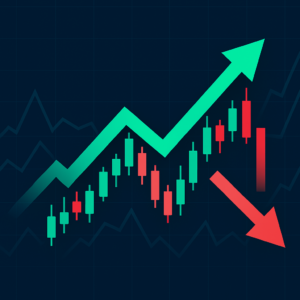You Can learn
Moving averages are one of the most widely used technical indicators in financial markets. They are used to smooth out the price data and identify trends in the market. In this article, we will discuss what moving averages are, how to calculate them, and how they can be used in trading.
What are Moving Averages?
Moving averages are a type of technical indicator used in financial analysis. They are calculated by taking the average price of a security over a specific time period. The resulting line is then plotted on a chart to show the trend of the security over time. The most common types of moving averages are simple moving averages and exponential moving averages.
Simple Moving Average (SMA)
A simple moving average is calculated by taking the sum of the closing prices of a security over a specific time period and then dividing it by the number of periods. For example, a 20-day SMA is calculated by adding up the closing prices of the security over the past 20 days and then dividing by 20. This will give you the average price of the security over the past 20 days.
Exponential Moving Average (EMA)
An exponential moving average is similar to a simple moving average, but it places more weight on the most recent prices. This means that the exponential moving average will react more quickly to changes in the price of a security. To calculate the EMA, you need to use a formula that takes into account the current price, the previous EMA value, and a smoothing factor.
How to Calculate Moving Averages
To calculate a moving average, you will need to follow these steps:
- Decide on the time period you want to use. This can be anything from a few days to several months or even years.
- Add up the closing prices of the security over the time period you have chosen.
- Divide the sum by the number of periods to get the average price.
- Plot the resulting line on a chart to show the trend of the security over time.
Example Calculation
Let’s say you want to calculate a 10-day simple moving average for a security. You would start by adding up the closing prices of the security over the past 10 days. Let’s assume that the closing prices for the past 10 days are as follows:
- Day 1: $20
- Day 2: $22
- Day 3: $25
- Day 4: $21
- Day 5: $23
- Day 6: $24
- Day 7: $26
- Day 8: $27
- Day 9: $28
- Day 10: $30
The sum of these prices is $246. To get the average price, you would divide this sum by 10, which gives you an average price of $24.6. You would then plot this value on a chart to show the trend of the security over the past 10 days.
How Moving Averages can be Used in Trading
Moving averages can be used in a variety of ways in trading. Here are a few common methods:
Trend Identification
Moving averages can be used to identify the trend of a security. If the price of a security is consistently above its moving average, it is considered to be in an uptrend. If the price is consistently below its moving average, it is considered to be in a downtrend. Traders can use this information to decide whether to buy or sell a security.

Support and Resistance
Moving averages can also be used to identify support and resistance levels. If the price of a security is approaching its moving average from below, the moving average can act as a support level. If the price is approaching from
above, the moving average can act as a resistance level. Traders can use this information to set their stop-loss and take-profit levels.
Crossovers
Moving averages can also be used to identify crossovers. A crossover occurs when the price of a security crosses above or below its moving average. For example, if the price of a security crosses above its 50-day moving average, it is considered to be a bullish signal. Traders can use this information to enter or exit a trade.

Conclusion
Moving averages are a popular technical indicator used in financial analysis. They are used to smooth out price data and identify trends in the market. There are two main types of moving averages: simple moving averages and exponential moving averages. Traders use moving averages to identify trends, support and resistance levels, and crossovers.
FAQs
- What is the difference between a simple moving average and an exponential moving average?
A simple moving average gives equal weight to all prices over the time period, while an exponential moving average places more weight on the most recent prices.
- What time period should I use for my moving average?
The time period you choose will depend on your trading strategy and the time frame you are trading on. Short-term traders may use moving averages with time periods of a few days, while long-term traders may use moving averages with time periods of several months or even years.
- Can moving averages be used on any security?
Moving averages can be used on any security that has price data, including stocks, bonds, commodities, and currencies.
- Can moving averages be used as a standalone indicator?
Moving averages can be used as a standalone indicator, but they are often used in combination with other technical indicators and analysis methods.
- Can moving averages be used in automated trading systems?
Yes, moving averages can be used in automated trading systems to make buy and sell decisions based on predefined rules.


